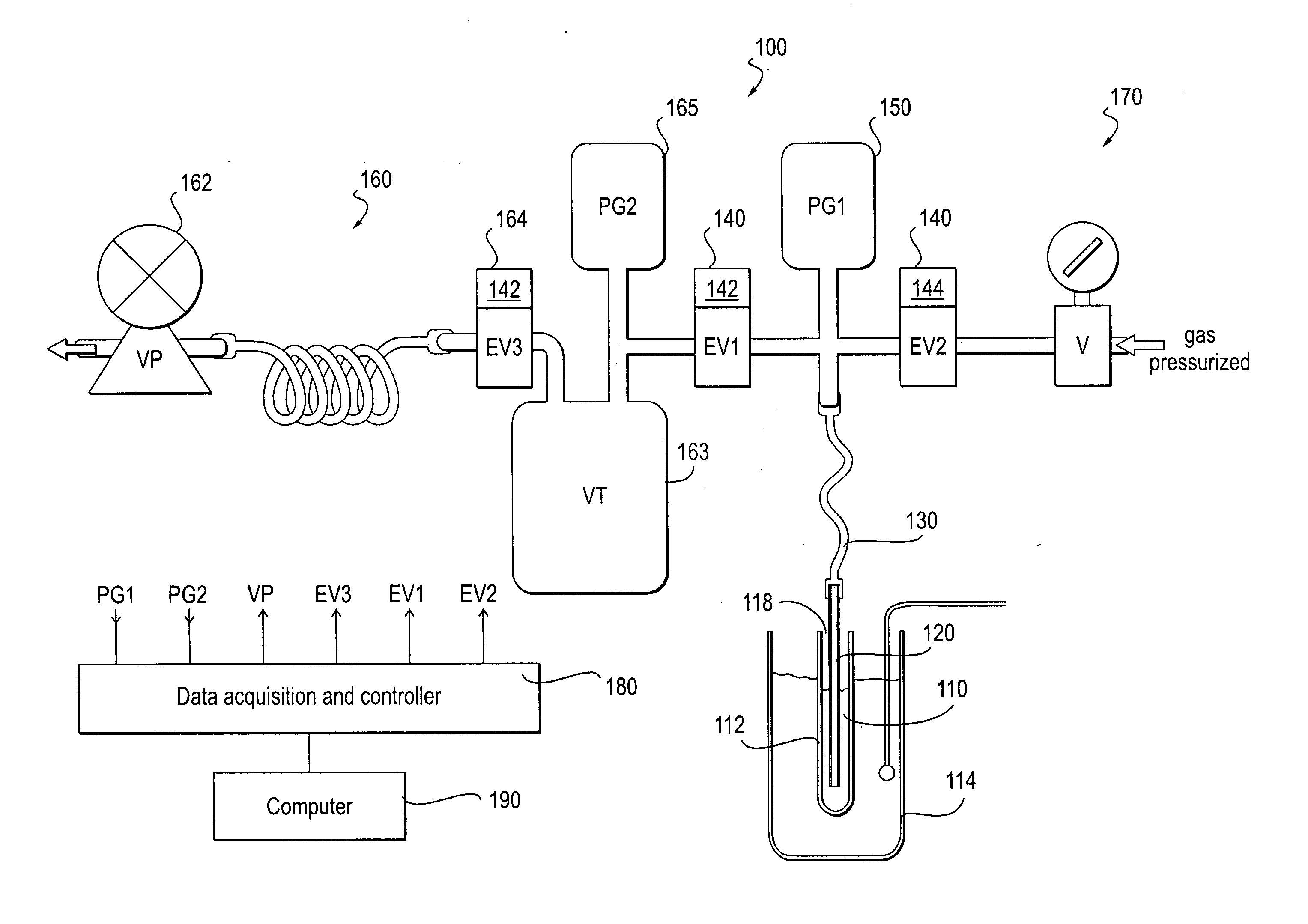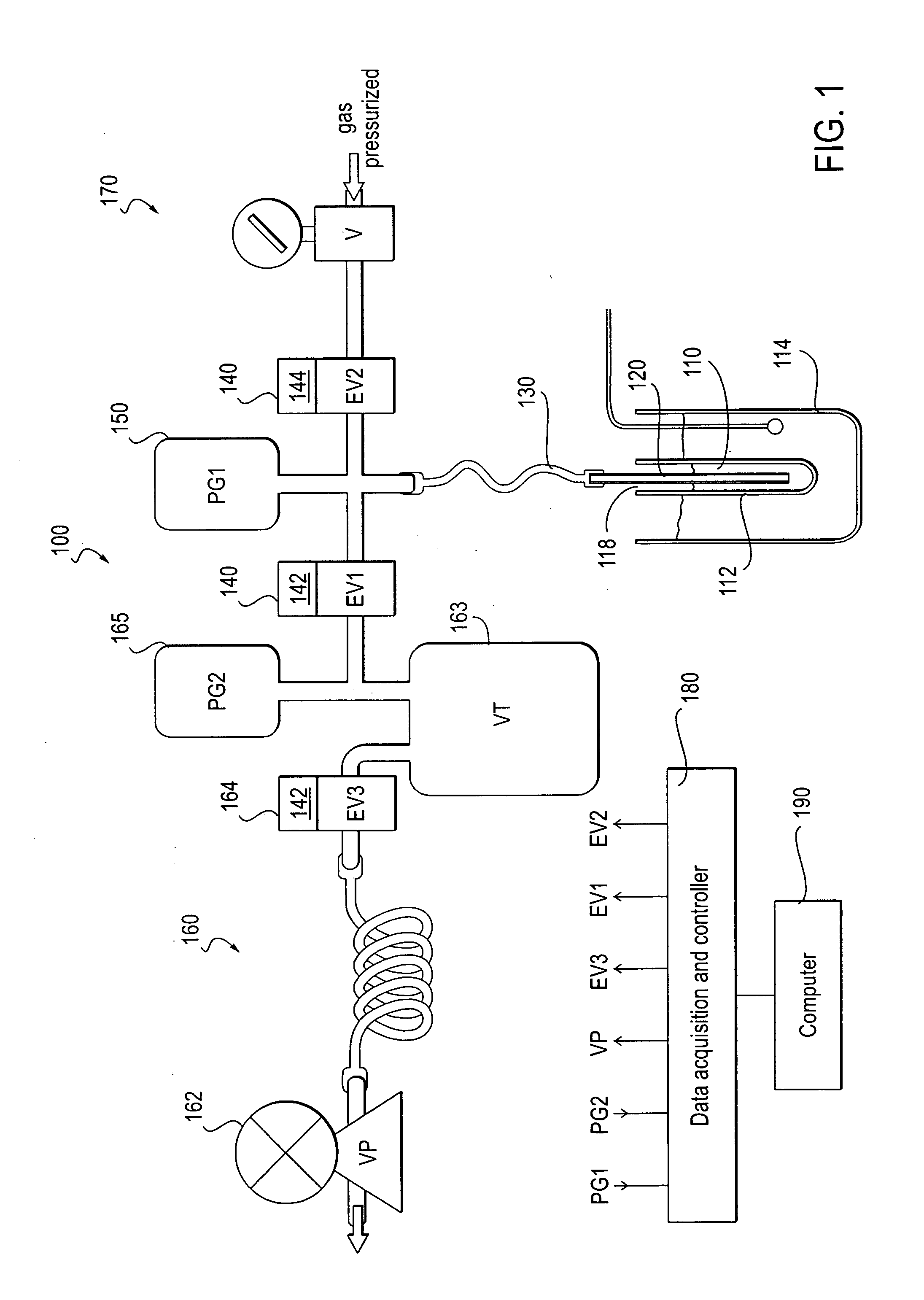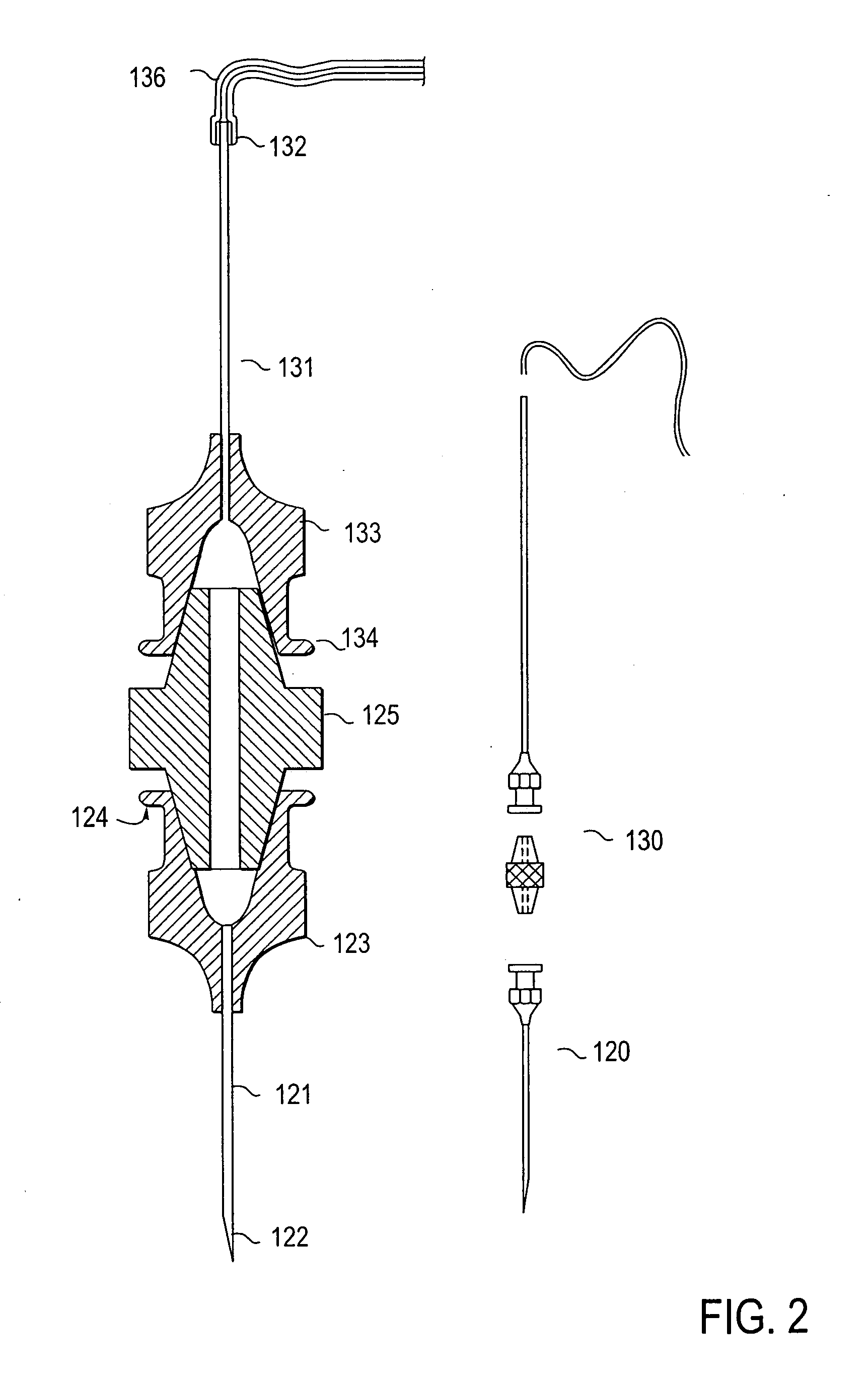Method for using an alternate pressure viscometer
a pressure viscometer and pressure technology, applied in the direction of chemical methods analysis, instruments, material analysis, etc., can solve the problems of inability to use a capillary viscometer for samples, inability to adjust the pressure, so as to achieve the effect of affecting the viscosity of the sampl
- Summary
- Abstract
- Description
- Claims
- Application Information
AI Technical Summary
Benefits of technology
Problems solved by technology
Method used
Image
Examples
example 1
[0061]This example illustrates operation of the device using a single capillary system depicted in FIG. 1 and discloses a method for calibration of the apparatus using samples of known viscosity to generate a correlation between the pressure difference vs time measured in chamber as a function to the samples viscosity. The method indicated was used to calibrate a single capillary system, if a multi channel capillary was used; the calibration would be performed for each channel. Additionally, if the operational conditions were modified, for example, if the same capillary system was to be used with different values of reduced pressure, or measurement duration, or temperature, it would be necessary to calibrate again the system taking account for this new set of parameters.
[0062]In this example, four petroleum oils were selected which were representative of the range of viscosity chosen to study. More particularly four polyalphaolefin (PAO) oils were chosen: PAO2, PAO4, PAO5 and PAO7. ...
example 2
[0069]This example is a presentation of some sequences of measures done on several petroleum products. The data demonstrates the repeatability of the device of this invention when it is employed to measure viscosity. These measures have been done with the single capillary system and according to the procedure and calibration method described in Example 1. The specific parameters for the capillary systems employed in this example are set forth in Table 2.
TABLE 2Set of parametersViscosity range2 to8 to3000 to10 cP25 cP10000 cPInternal diameter of the needle (mm)0.260.410.84(25G)(22G)(18G)Length of the needle1″10 mm10 mmStarting pressure (mb)−110−90−220Measure duration (s)525
[0070]The device and parameters were not optimized; accordingly the values of repeatability described below have to be considered as the minimum of performance for the ability of this invention. Repeatability has been demonstrated for two ranges of viscosity 1-10 cP and 3,000-10,000 cP.
[0071]Results:[0072]Range 1-1...
example 3
[0084]The following study has been done with an eight channel capillary system. It differs from the single channel capillary system in the sense that the reduced pressure part is common for the eight capillaries so the measures have to be done one after the other. At the opposite, the gas pressurized part is unique for each cell and thus, there was a requirement to splice eight flowmeters. Here we used 150 mm flowmeters with a stainless steel ball for a range of 0 to 5 Liter per hour. The gas used for this example is air.
[0085]The oxidation performance of two passenger car engine oils is studied here. Each oil has been tested four times. A sequence of the eight measures of viscosity is done every 5 minutes. From the recorded values we calculate the percent of variation of the viscosity. The test is done at a temperature of 180° C., the air was bubbled in the oil at a flowrate of 11 / h to commence suitable oxidation conditions. The test is stopped when the relative visco...
PUM
 Login to View More
Login to View More Abstract
Description
Claims
Application Information
 Login to View More
Login to View More - R&D
- Intellectual Property
- Life Sciences
- Materials
- Tech Scout
- Unparalleled Data Quality
- Higher Quality Content
- 60% Fewer Hallucinations
Browse by: Latest US Patents, China's latest patents, Technical Efficacy Thesaurus, Application Domain, Technology Topic, Popular Technical Reports.
© 2025 PatSnap. All rights reserved.Legal|Privacy policy|Modern Slavery Act Transparency Statement|Sitemap|About US| Contact US: help@patsnap.com



